| Columns Retired Columns & Blogs |
Kinergetics KCD-40 CD player 1993 Measurements
Sidebar 4: 1993 Measurements
From its fixed outputs, the KCD-40 produced 6.97V/6.96V (left/right) when decoding a 1kHz, 0dB (full-scale) sinewave. As noted earlier, there should be no difficulty in using the KCD-40 to drive virtually any amplifier directly from either pair of outputs if desired (using an external attenuator with the fixed-gain outputs). The output impedance was the highest in the group at 250 ohms (right channel, just slightly less in the left), though still low enough that there should be no loading problems encountered. Its DC offset was 19.1mV in the left channel, 15.5mV in the right. A positive-going impulse indicated positive at the unbalanced output; the KCD-40 is therefore non-inverting.
The frequency response of the KCD-40 was relatively flat (fig.1), with only a small rolloff at the top end. The de-emphasis error also shown in fig.22 indicates a small loss in the "brightness" region and a small rise above. At less than 0.25dB change from flat in either direction, the audibility of this is unlikely to be significant. The crosstalk shown in fig.2 is good, well-matched between channels and with that rather common rise at the higher frequencies, due most likely to interchannel capacitive coupling. If indicating separation less strikingly good than at least two other players in the group, this is still a result unlikely to compromise the player's performance.
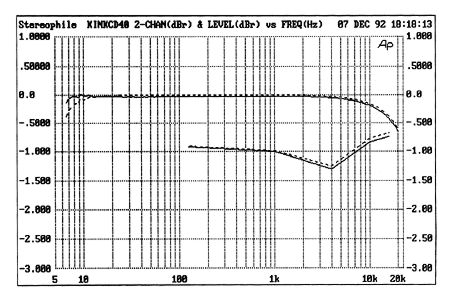
Fig.1 Kinergetics KCD-40 Platinum, frequency response (top) and de-emphasis response (bottom) (right channel dashed, 0.5dB/vertical div.).
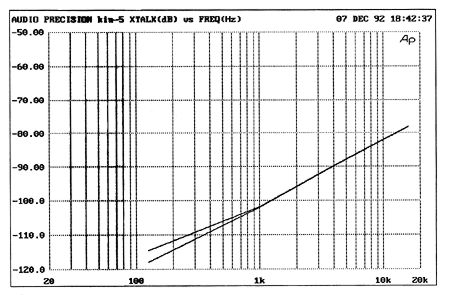
Fig.2 Kinergetics KCD-40 Platinum, crosstalk (R–L channel top, 10dB/vertical div.).
Fig.3 shows the analysis of the KCD-40's decoding of a track of "digital silence" (all data words zero). As is typical in multi-bit players, the ultrasonic noise shows no unusual rise. Small blips of power-supply–related noise, well down in level, are the only artifacts visible. Using the same spectral analysis, fig.4 shows the result of decoding a –90dB, 1kHz dithered sinewave signal. The curve indicates some small nonlinearity, no significant artifacts, and the same innocuous low-frequency noise noted in fig.3.
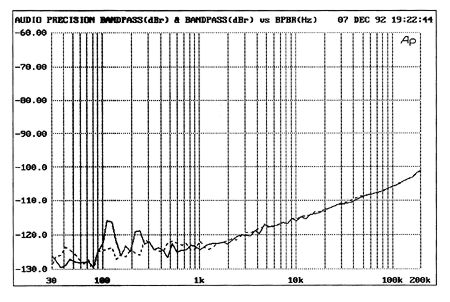
Fig.3 Kinergetics KCD-40 Platinum, spectrum of digital silence with noise and spuriae (1/3-octave analysis, right channel dashed).
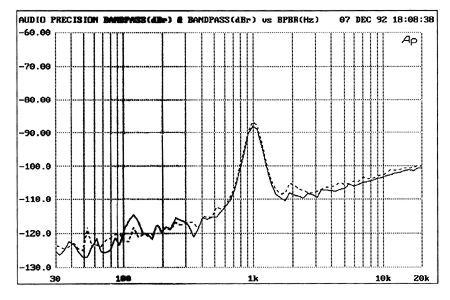
Fig.4 Kinergetics KCD-40 Platinum, spectrum of dithered 1kHz tone at –90dBFS, with noise and spuriae (1/3-octave analysis, right channel dashed).
Looking at the KCD-40's linearity in a more revealing way (fig.5), we see some nonlinearity beginning as low as –70dB, increasing at lower levels but leveling off to remain no worse than +4dB down to –110dB. This is an acceptable but not exceptionally good result. The two channels are not quite identical, the left channel being the slightly better of the two.
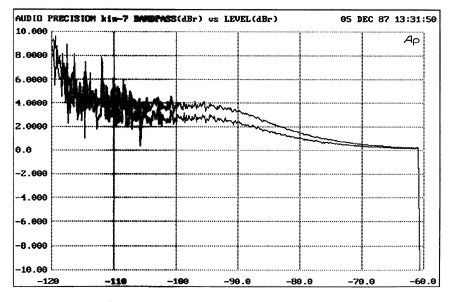
Fig.5 Kinergetics KCD-40 Platinum, departure from linearity, right channel top (2dB/vertical div.).
The noise modulation as a function of signal level vs frequency is plotted in fig.6. A tightly clustered series of curves is the best result, but the Kinergetics' performance is only fair here. Its high-frequency clustering is less good than the other players, but the clustering does remain fairly consistent down to low frequencies, with the exception of the low-frequency rise for the highest signal level of –50dB. A 1kHz undithered sinewave at –90dB was reproduced with a good, clean stairstep shape (not shown), while a full-scale (0dB) 1kHz squarewave was typical of players using linear-phase digital filtration (not shown).
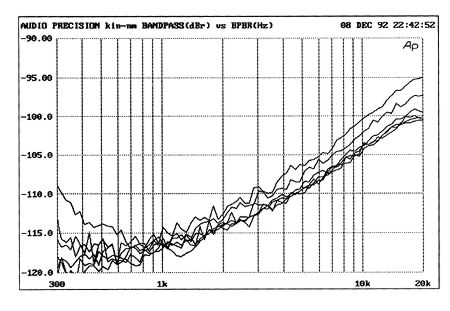
Fig.6 Kinergetics KCD-40 Platinum, noise modulation, –50 to –100dBFS (5dB/vertical div.).
Driving the KCD-40 with a a full-scale combined 19kHz+20kHz signal and performing an FFT analysis of its output resulted in the plot shown in fig.7. Some artifacts are visible here, especially at 1kHz (though it's a rather high –65dB, this is still less than 0.06%), 18kHz, and 21kHz (about –78dB, or about 0.012%), though the response is quite clean over the rest of the range. (We become so accustomed to extremely low distortion figures from CD players that we tend to forget that even higher than normal readings are still very low on an absolute basis.)
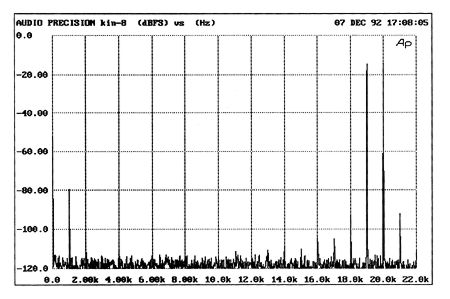
Fig.7 Kinergetics KCD-40 Platinum, HF intermodulation spectrum, DC–22kHz, 19+20kHz at 0dBFS (linear frequency scale, 20dB/vertical div.).
Using the Pierre Verany test disc to check the Kinergetics' error-correction capability revealed the player to have no problems up to track 35, minor glitches on tracks 36 and 37, and continuous dropouts on track 38; the required CD standard is track 27—a no-brainer for any modern CD player.
The measurement results for the Kinergetics KCD-40 are generally good though not exceptional. Its linearity is only fair, and the 1kHz IM measurement is definitely higher than normal, though still moderately low as distortion percentages go. There is, however, nothing in the measurements which would obviously interfere with a good listening result.
The jitter was measured in the same fashion described in RH's article, "The Jitter Game," published in our January issue. In brief, a Meitner LIM Detector was used to demodulate the clock signal (read at the input to the DAC chip in each player). Analyzing this result gives both an overall jitter measurement (read on an RMS voltmeter and converted to picoseconds of jitter) and a plot showing the jitter level as a function of frequency up to 20kHz (an FFT of the demodulated signal, calculated and plotted by the Audio Precision System 1). The data the CD player was being asked to decode was in all cases a 1kHz sinewave, at six different levels: 0dB, –10dB, –30dB, –49.97dB, –70.31dB, and –90.31dB. The 0dB reference for all these plots was 1% of the 44.1kHz CD system word-clock interval, or 226.7ns.
The discrete jitter measurements in picoseconds are shown in Table 1. The Kinergetics had its best result at a –50dB data level (fig.8). The result is very clean, with only minor and isolated spikes. At a slightly higher level (–30dB, fig.9) spikes harmonically related to the 1kHz signal become clearly evident (though interestingly absent at 6kHz, 12kHz, and 18kHz), and the 1kHz jitter level itself is fairly prominent. But the average jitter level is very low.
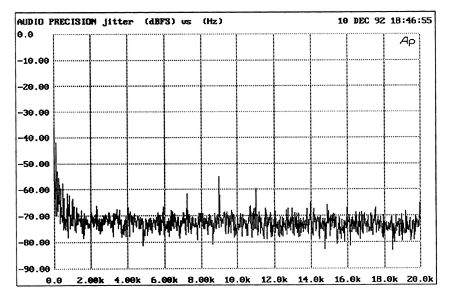
Fig.8 Kinergetics KCD-40 Platinum, word-clock jitter spectrum, DC–20kHz, when processing 1kHz sinewave at –50dBFS (linear frequency scale, 10dB/vertical div., 0dB = 226.8ns).
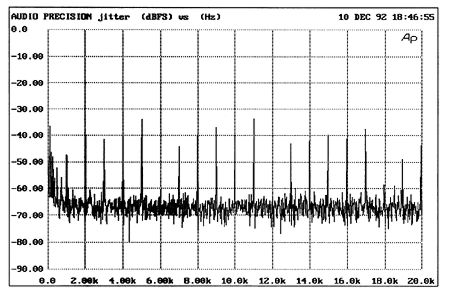
Fig.9 Kinergetics KCD-40 Platinum, word-clock jitter spectrum, DC–20kHz, when processing 1kHz sinewave at –30dBFS (linear frequency scale, 10dB/vertical div., 0dB = 226.8ns).
Table 1: Kinergetics KCD-40 Jitter
| Level (dB) | 1kHz data Discrete Jitter (ps) |
| 0 | 74 |
| –10 | 118 |
| –30 | 106 |
| –49.97 | 53 |
| –70.31 | 54 |
| –90.31 | 55 |
The Kinergetics' slight tendency to be more forward and a bit brighter than the other machines may be reflected in its jitter spectrum.—Thomas J. Norton
- Log in or register to post comments



































